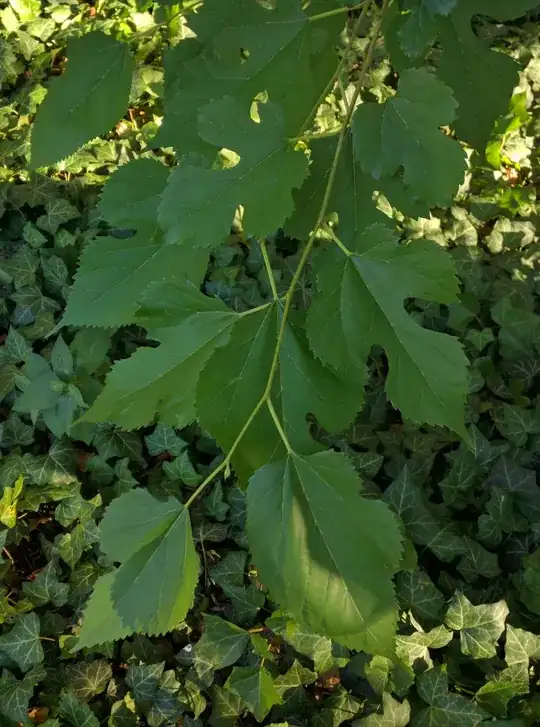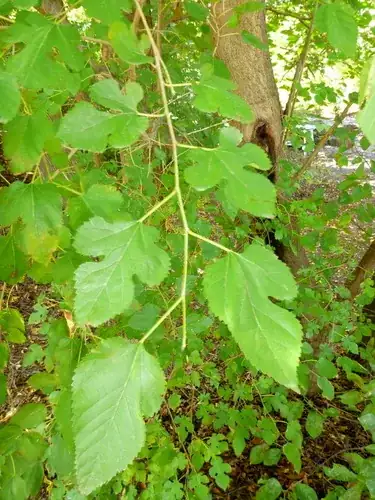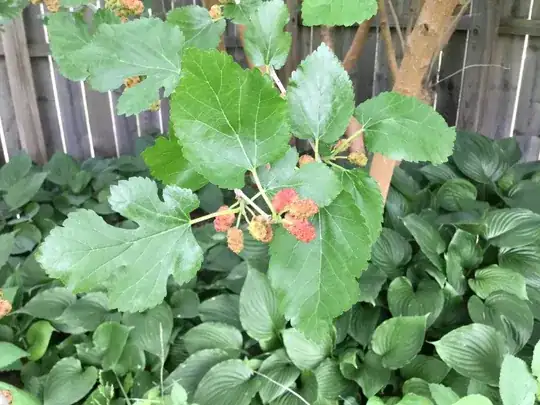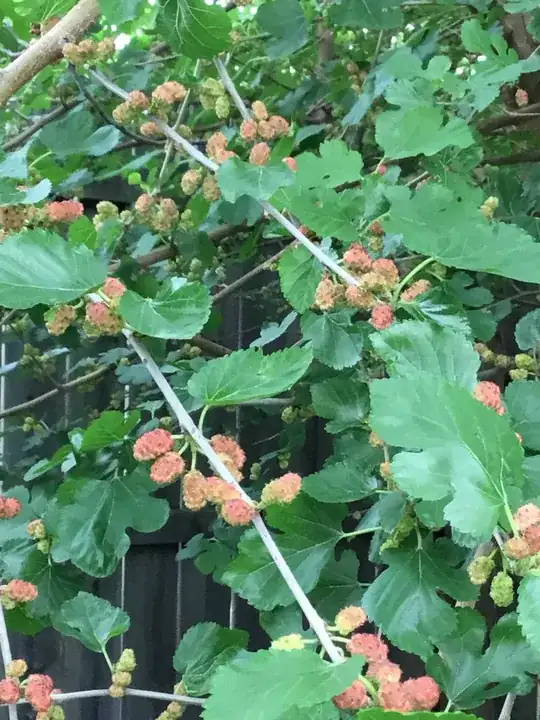I was identifying a relatively young tree in my yard, and I'm pretty sure it is a Mulberry tree. I live in Massachusetts and came across this article stating that red Mulberries are endangered in Mass so I was motivated to investigate further.
Red and white Mulberries are the most common types, but it doesn't seem to be either one.
Red: The undersides of the leaves are not downy so it seems that it is not red. The undersides are somewhat scratchy. I also live close to Boston (Somerville) which seems like an unlikely location. On the other hand, it is growing on the side of a hill in the understory of some large spruce trees which seems to be a preferred location for red.
White: Looking at this article, the leaf margins do not look like a white. The leaf edges of mine are pointy but white has more rounded edges.
I have some pictures below. Would love to find out which kind of Mulberry it is.
More details in response to comments:
- Tree hasn't fruited yet
- Leaves are about 4-7"
- Tree is about high 15' high
- You can see a bud in the photos






